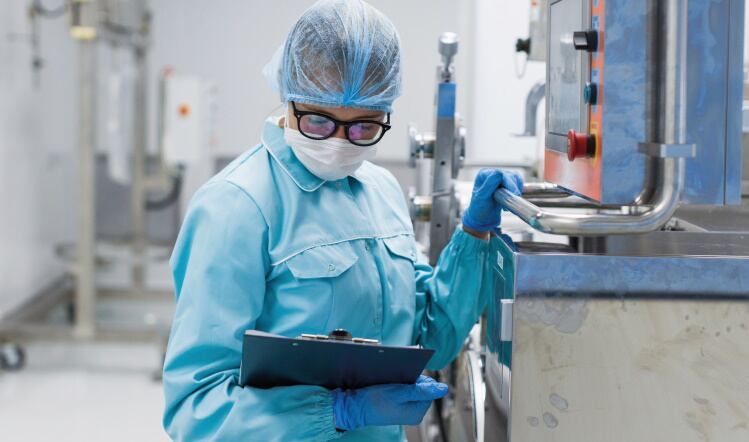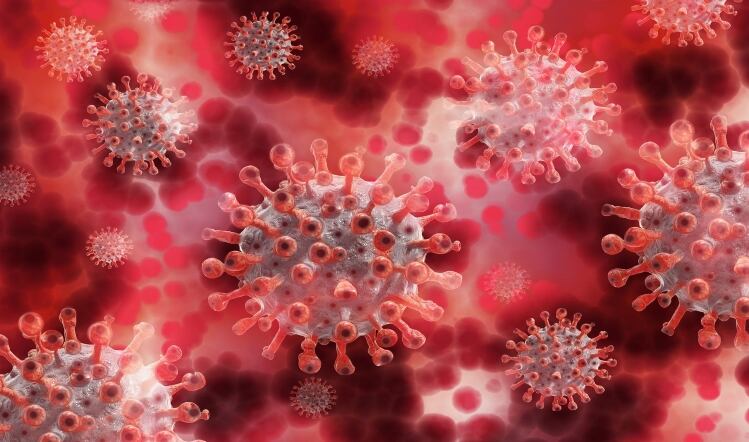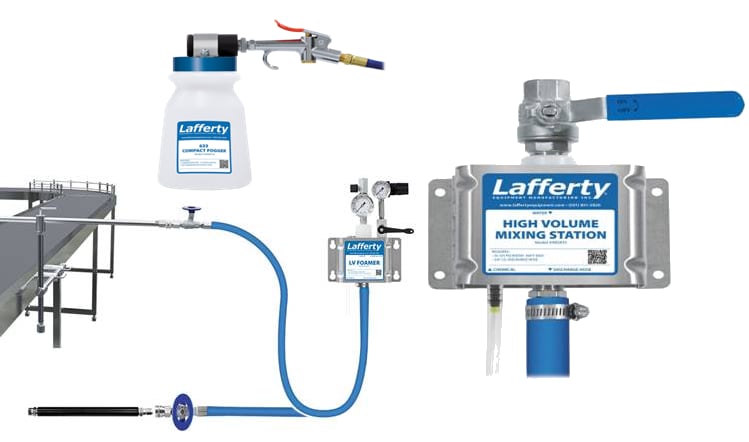Background
Smith has more than 35 years of food safety/research training and experience. Before joining Vikan she was a microbiologist for a large poultry processor; a scientific research officer in the food safety division of the Department for Environment, Food and Rural Affairs (DEFRA); and Campden BRI's food hygiene research manager.
She holds qualifications in applied microbiology (HNC); nutrition & food science (BSc (Hons)); advanced food hygiene and Hazard Analysis and Critical Control Point (HACCP); and is a qualified Food Safety System Certification 22000 lead auditor.
She has authored or co-authored numerous food safety and hygiene publications and regularly presents her research at national and international food safety events.
Smith is an active committee member of the UK regional section of the European Hygienic Engineering & Design Group (EHEDG) and the Institute of Food Science and Technology's eastern branch.
She is current chair of the Microbiology Member Interest Group at Campden BRI; and recently completed work on the Service Provision Technical Working Group of the Global Food Safety Initiative.
How did you end up working in food hygiene?
“I’ve always been passionate about food – eating it, making it, its chemistry and microbiology and the technology involved with its production. Even when I was at school my first paid job was egg collecting.
"That was followed by working in a grain store for a summer and then three years in the micro labs of Bernard Matthews, during which time I studied applied microbiology at Norwich City College. This opened the door for me to work for the food safety division of DEFRA as a research officer.
"After 16 years at DEFRA’s labs in Lowestoft and, having gained a degree in Food Science and Nutrition, I was invited to join the hygiene department at Campden BRI.
"Through a Campden BRI research project investigating dry cleaning techniques I came to know Vikan, a Danish-based manufacturer of cleaning tools and utensils to the food industry.
"In August 2011, Vikan asked me to join them as global hygiene specialist. I can’t believe that it’s nearly ten years ago since I took that first flight to Denmark and that there’s now a small town in Jutland that has become my second home.”
What are your views about the hygienic design of food processing equipment, the challenges that can occur and your recommended best practices to address them?
“The hygienic design of food processing equipment is not a new concept. EHEDG has been established for more than 30 years. Its headquarters are in Naarden, The Netherlands but it is now represented in around 60 countries worldwide and involves the participation of 1,300 people globally.
"Using this global expertise EHEDG has published 55 guidelines related to hygienic design in the food industry, including that on the hygienic design of food factories and food industry ventilation systems, to stress the importance of a holistic approach to hygienic design application.
"By law, food production equipment must be able to be effectively cleaned (Machinery Directive 2006/42/EC).
"Hygienic design offers multiple benefits including faster and more effective cleaning, reduced costs, minimising risk of product cross-contamination while maximising food safety and quality.
"GFSI benchmarked food safety schemes already include the requirement for cleaning tools and utensils to be of hygienic design. Work on GFSI benchmark requirements for hygienic design throughout the food industry was completed in 2020.
"Regardless of the guidance available, and the legal and standard requirements for hygienic design, many sites still face related challenges. Few food production sites have the luxury of designing a food factory from scratch. Many sites must manage inherently bad hygienic design and retrofit facilities as best as possible.
"These issues are often due to the item they are trying to clean being old and/or never designed with hygienic design in mind or due to it being worn and no longer able to be cleaned quickly and effectively or due to it not being used for its original purpose and being difficult to clean and maintain when used for the alternative purpose.
"These issues are often also associated with the environment in which the food production equipment is placed, and other equipment used within the food production area.
"These things may not be in direct contact with the food. However, if poorly maintained and difficult to clean they can themselves become a significant source of contamination and increase the risk of product contamination and damage to the food business.
"Balancing hygienic design with health and safety also brings its own challenges. Hygienic design advocates open, easy access; but this must be balanced with the need to protect workers, for example, from slicing blades or grinders.
"Inevitably, cost can also present an obstacle to the implementation of hygienic design.
"The initial cost of purchasing equipment and facilities that provide good hygienic design is often higher. However, studies have shown the savings accrued from reduced cleaning time and maintenance frequency and a lower incidence of product rejection and recall ultimately makes the selection of hygienically designed equipment much more cost effective.
"New technologies and scientific developments will have an impact. For example, there are significant developments in the use of robotics in the food industry, as highlighted by the robotics team from the National Centre for Food Manufacturing, University of Lincoln.
"This is an area where hygienic design must form an integral part of equipment design and construction. The principles of hygienic design (EHEDG Doc. 8). while being fundamental to food safety and quality, are not rocket science.
"The greatest impact will come through raising awareness of sources of contamination within the food processing environment and how the application of hygienic design in combination with appropriate installation and maintenance can minimise the risk of product contamination from these sources.
"EHEDG experts and guidelines provide a reference source to help with equipment selection, in a wide range of different food processing situations, and advice on best practice regarding installation and maintenance.
"There is a need to train the food industry, and suppliers to the sector, in the principles of hygienic design, so their application becomes second nature when designing or purchasing new facilities and equipment. EHEDG can offer such training.
"Additionally, the recently formed IFST Food Processing Special Interest Group provides IFST members with an opportunity to engage and share knowledge related to food engineering, manufacturing operations, continuous improvement and equipment (materials and hygienic design).
"It will consider topics such as preservation, robotics and artificial intelligence (AI). The group will work closely with the food industry and external organisations, including EHEDG, to discuss industry challenges (such as process, product, equipment design/modifications and production).
"It will also contribute to relevant publications and events so as to provide operational and technical teams with the support they need.
"My feeling is that, more than ever before, the global food industry is collectively recognising the importance of hygienic design in every aspect of food production.
"Food producers, scientists, legislators, auditors, and equipment and facilities manufacturers are acknowledging and advocating that hygienic design is an indispensable prerequisite for safer food production, so watch this space!"

Ask the Expert offers a regular source of advice on technical matters from industry professionals who are all IFST members and has been created with the help of the IFST.




